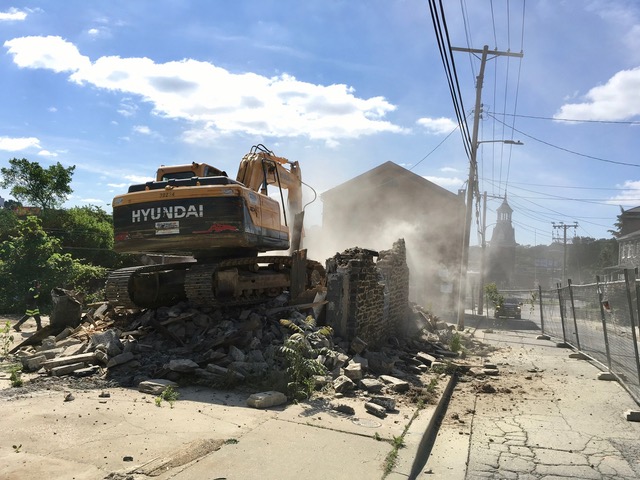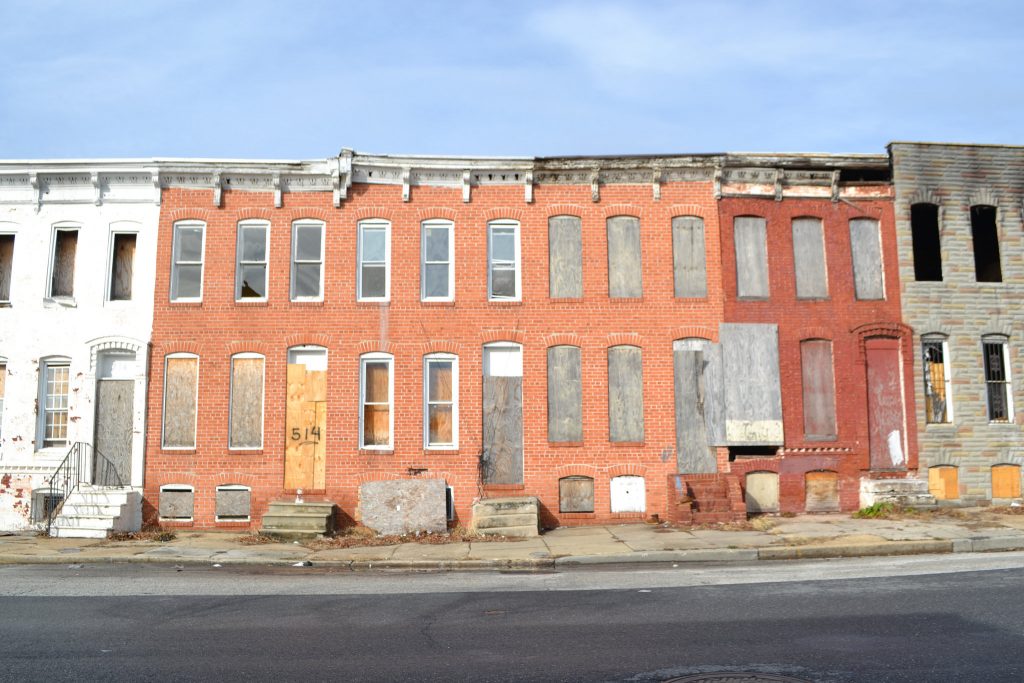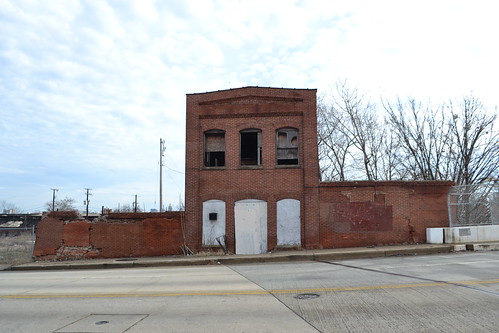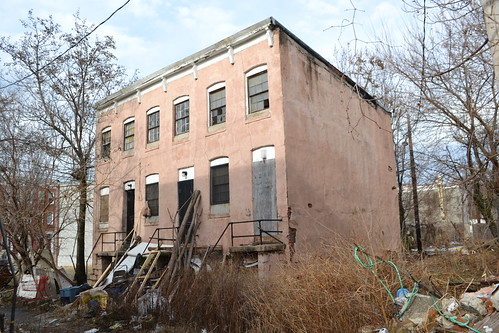A breach of public trust. This is at the heart of yesterday’s demolition of two 1840s stone houses in Woodberry. We are shocked and angry to see the loss of these two buildings—and anxious to protect Woodberry’s historic buildings from more demolition.
Over the past year, Woodberry residents, City Councilman Leon Pinkett, and preservation organizations, including Baltimore Heritage and Preservation Maryland, rallied to protest initial plans for demolition, attended meetings, offered comments, and worked with the development team on a proposal to incorporate elements of the existing Clipper Road buildings into a proposed new apartment building. The developers presented this revised plan at a community meeting last fall and again in January 2019 at a public hearing before the city planning department’s Urban Design and Architectural Advisory Panel. Baltimore Heritage along with the community association, Councilman Pinkett, and others supported this compromise.

Then, yesterday morning, both stone houses were demolished without warning. After hearing the news, the architectural firm for the project, PI.KL Studio, resigned. The development partner, Mr. Christopher Mfume at CLD Partners, at first defended the demolitions then late yesterday announced that he had also left the project. The Baltimore Sun reported that the owner of the site, Woodberry Station LLC, and its resident agent Katherine Jennings could not be reached for comment.
We don’t want to see another loss like this one in Woodberry. We hope the neighborhood will seriously consider renewing efforts to work with the city Commission for Historical and Architectural Preservation (CHAP) and become a designated local historic district. Proposals to demolish or alter historic buildings within CHAP districts require review by CHAP staff and, often, the full CHAP commission. Most importantly, city law requires that these reviews take place before a demolition permit can be issued. Woodberry has considered becoming a CHAP district in the past, and Baltimore Heritage stands ready to assist if the neighborhood’s residents want to consider doing so again.






